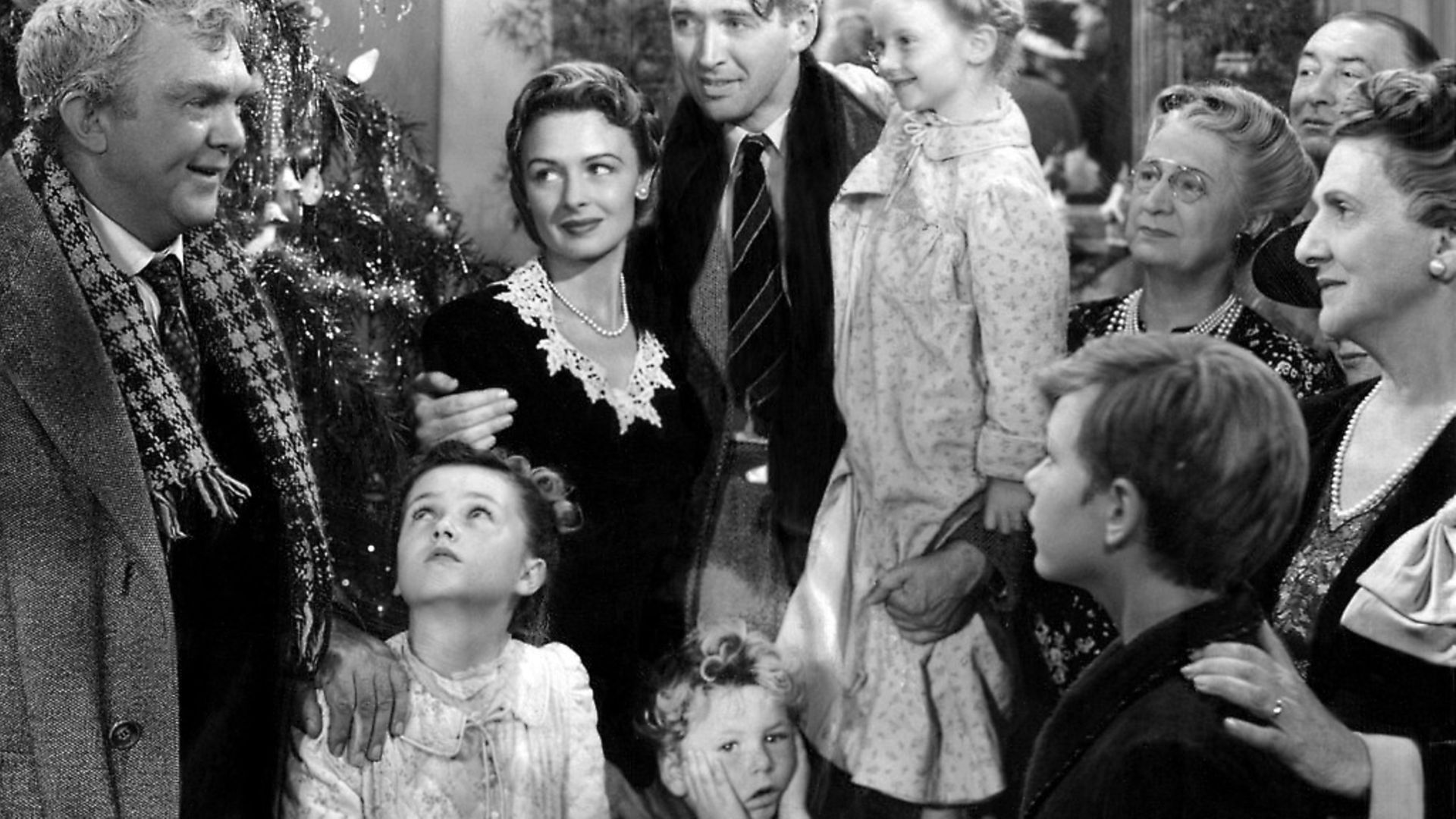
The 1930s and 1940s created a template for festive films which is as powerful now as ever, writes BONNIE GREER.
While filming Discovering: Christmas Films, which will be shown on Christmas Day and over the season on Sky Arts, it suddenly became clear to me that it was the Baby Boomer generation that discovered this indispensable part of the festive season.
Boomers were the first television generation, the inventors of ‘pester power’, and it was we for whom Christmas became a kind of family conglomeration. Whatever your financial status, Christmas became, in the post-war years, the supreme expression of healing and dreaming.
Our fathers were the ones who had fought in the war, our mothers had been the young girls who worked away from home in their droves and so this idea of home had to be rebuilt, refashioned. Instead of a hearth, there was the television, a big, black, blinking box situated in the middle of the main room in the house.
It brought us all together, rather than meal time. We Boomers discovered the world through television and some controller or programmer somewhere was left to decide what we should know. Television was all part of the coherence that was being created.
And this is not to say that Christmas was false or artificial or somehow constructed where it had never been. This is to say that something had to be built – and quickly – that restored what is called ‘normalcy’ and maybe hide the tensions and the tragedy of the years before we were born.
Only now can many of us begin to actually appreciate the sacrifices made and the illusions created in order to give us Christmas with all the trimmings. Even now, after decades, I can still smell the big fir tree in our front room, nature captured and brought in to our suburban home on the edge of the inner city. We were little kids and had no idea that a whole year had been spent by our parents scrimping and saving for a day straight out of a mixture of a high Victorian dream, and the reality of American consumerism.
Christmas boxes were piled high; tinsel and the big star on top of the tree twinkled. And since my childhood and adolescent Christmases happened in Chicago, there was real snow. Piles and piles of it outside the window and in the backyard.
The snowman was real and so was the howling wind. No Midwesterner past late childhood has a romance about snow. But if you were a kid in my time, the early 1960s, inside the house was the family and the big box television. And the movies that came on at 3pm.
On Rotten Tomatoes, the movie website, there are only three films made after 1960 in their Top Ten Christmas Movies List. The other seven were made in the 1930s and 1940s.
They are: Remember The Night (1940), a Barbara Stanwyck and Fred MacMurray vehicle; Babes In Toyland (1934), starring Stan Laurel and Oliver Hardy; The Shop Around The Corner (1940), with James Stewart and Margaret Sullavan; Holiday Inn (1942), with Bing Crosby and Fred Astaire; Miracle on 34th Street (1947), with a young Natalie Wood; Meet Me In St. Louis (1944), starring Judy Garland; and, of course, at number one, It’s A Wonderful Life, the second James Stewart movie on the List.
A film does not have to have to take place at Christmas to qualify as a Christmas film. It takes something more. And to this list I would add The Adventures Of Robin Hood (1938), starring Errol Flynn, the template for every ‘Robin’ that came after him.
This movie, for me, was like a big Christmas bauble itself. Shot in glorious colour, with lots of green and red, like a Christmas tree itself, it featured the forest, a place to be free. It had a jolly man at the centre who delivered the gifts of his own presence and joy.
It had a dreamer (Maid Marian) waiting for the promise of her life to be fulfilled. And that score. That glorious score, like the feeling of the carols in church, voices sweeping to the ceiling and through the nave, giving us one more moment of the promise of the year to come and a good feeling about the year gone by.
As It’s a Wonderful Life has risen to deserved prominence, many people ask why it was not recognised at the time of its release. After all, it is a Frank Capra film, his supreme example both of the feel-good of what is known as ‘Capracorn’; and it was Jimmy Stewart’s return from the war.
One reason may be the scene in which Stewart has a kind of breakdown. Out of the blue, it may have felt like another film, something eerie and strange. No one took on board at the time, that Stewart had served as a US airman in the Second World War and had flown bombing raids over Germany. We cannot imagine what he would have seen, what he would have felt.
That scene of despair seems mild to us now, but to audiences then, it may have been jarring, disorientating. Even, too, at the very end when Stewart’s character sings, holding his little girl, we sense that something else has happened. The actor said, decades later, that the child actress who played his daughter had forgotten the words to the song.
She was making them up and Stewart breaks character to laugh at her. His face changes and we see the real man and maybe, then, that was not easy to see. Many families were beginning to grapple with what we now call post-traumatic stress disorder and that smile of Stewart, that real man coming through, may have been not the face of an actor, but of a survivor.
But the undeniable reason why It’s A Wonderful Life was somehow buried in 1946 is the fact that these films were also released the same year: The Best Years of Our Lives, a movie about returning GIs that swept everything at the Academy Awards; The Big Sleep, the film that sealed the Bogart-Bacall mania; Duel in the Sun, in which the hot duo of Jennifer Jones and newcomer Gregory Peck crawl through the desert towards one another in a last love-hate embrace; Gilda, in which GI pin-up and screen siren Rita Hayworth performs a striptease; The Harvey Girls, a big, fat MGM musical starring Judy Garland; The Killers, which saw Burt Lancaster and Ava Gardner burn up the screen; Notorious, which saw Cary Grant and Ingrid Bergman break the film code by kissing for longer than three seconds (albeit with interruptions); and The Postman Always Rings Twice – every man’s inner fantasy about Lana Turner, at a theatre near you. These films are considered now to be classics of the cinema and I have not even mentioned what Kurosawa released in 1946, or Powell and Pressburger here in the UK.
So It’s A Wonderful Life simply got buried, but television resurrected it and gave it to us all as the supreme message of this season. What the old movies do, the ones we love at Christmas, is take the real world and make it, for one day, better. On the surface they portray the world as it is, but something else is happening underneath.
The thing that is happening is called transcendence, mixed in with a bit of hope and a bit of joy. We try, watching these films, to re-invent what ‘home’ and ‘family’ mean and also something about human dignity, transcendence, goodness and joy.
These aspirations are becoming increasingly difficult to articulate in our time, but we can feel them when we sit down and watch our favourite Christmas film.
We can look back to the good times in our childhood, and remember our dreams and that time when we believed in them. And that, somewhere inside of us all, we know that we still can.










